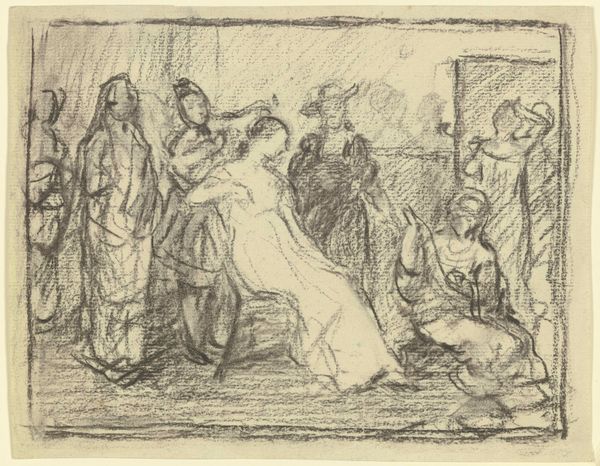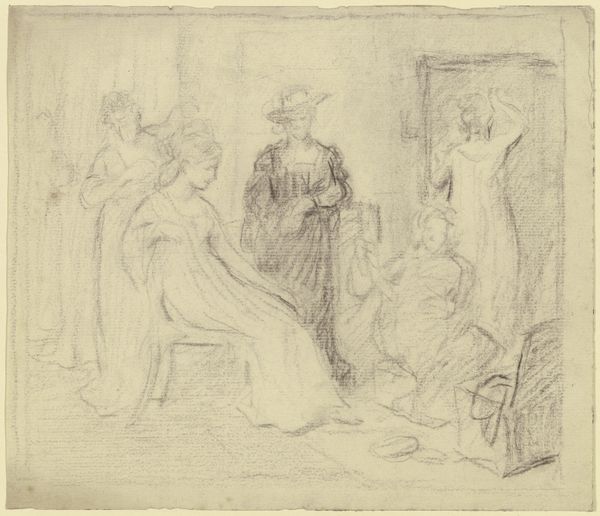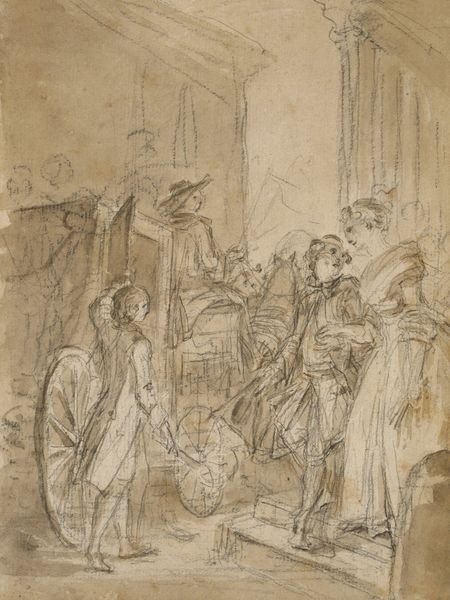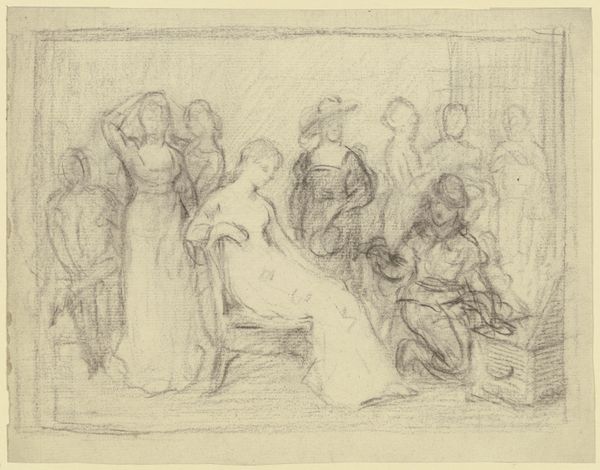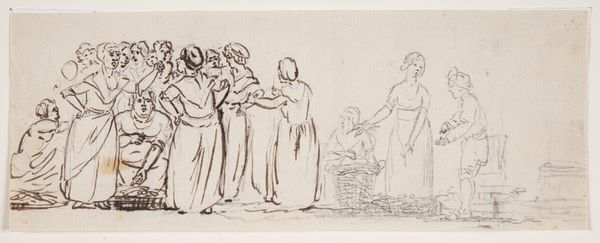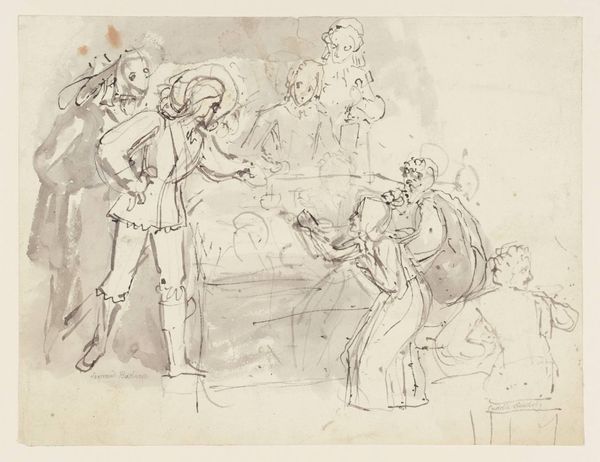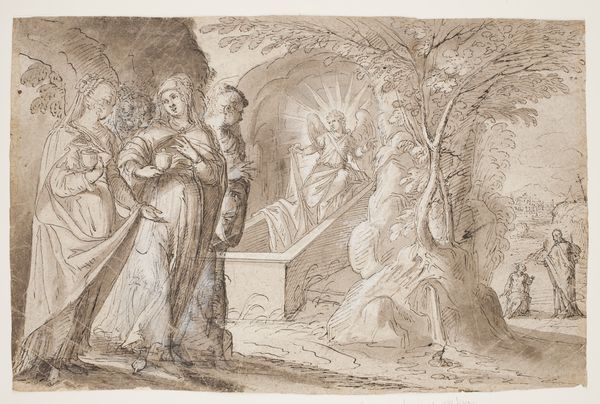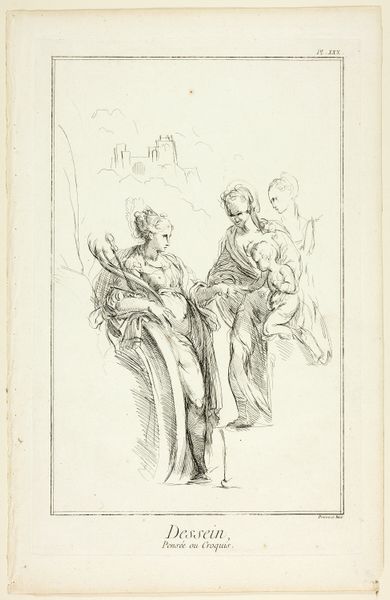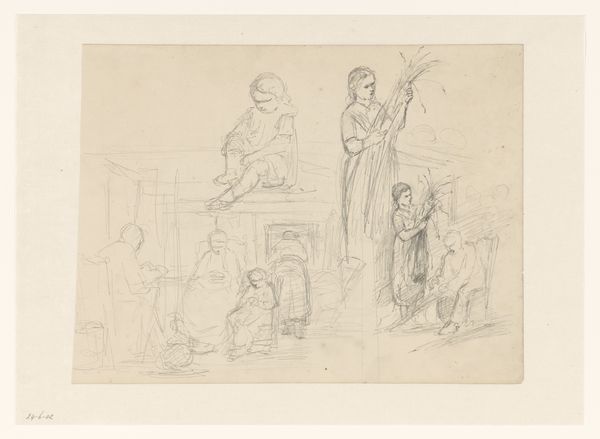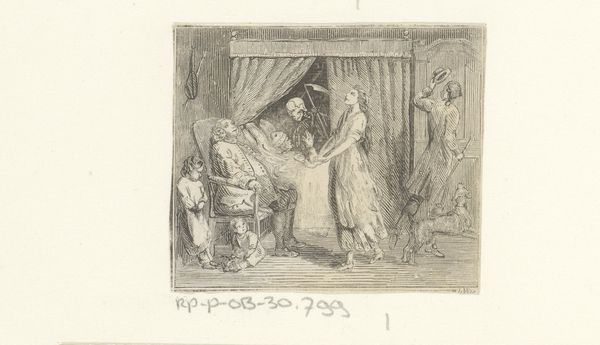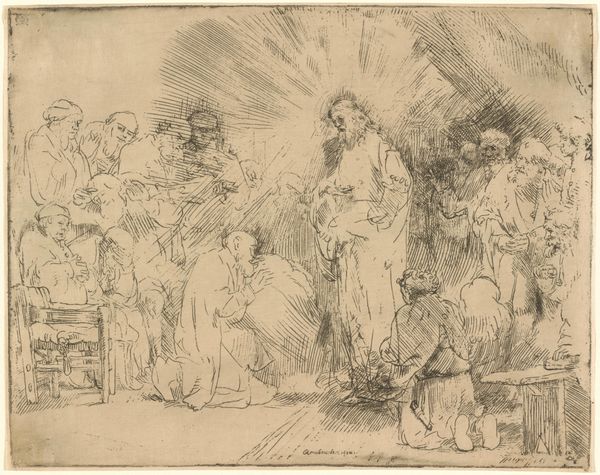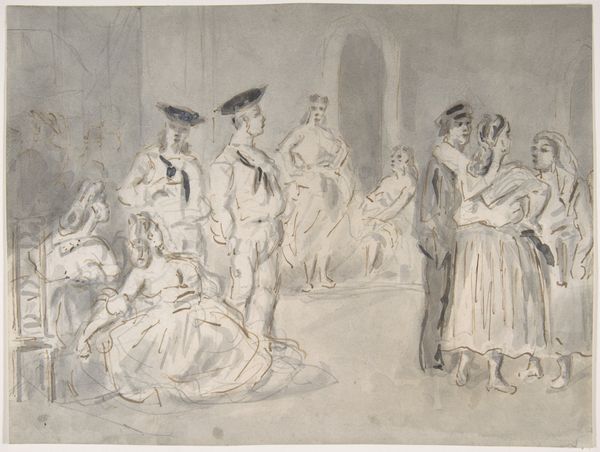
John the Baptist and Two Men, with Christ 1770 - 1780
0:00
0:00
drawing, paper, ink
#
drawing
#
narrative-art
#
figuration
#
paper
#
ink
#
history-painting
#
academic-art
Dimensions: Sheet: 10 1/8 × 12 7/16 in. (25.7 × 31.6 cm)
Copyright: Public Domain
Curator: Welcome. Here we have William Hamilton’s ink and wash drawing on paper, "John the Baptist and Two Men, with Christ," dating from the 1770s or 80s. It's currently held at the Metropolitan Museum of Art. Editor: There's a quiet drama to this work. Despite the sparseness, I'm immediately drawn to the supplicant figure. Is that a river or reflecting pool that divides the scene? Curator: Possibly. I find it interesting how Hamilton used a rather limited palette of brown inks to convey the luminosity and modeling of forms, indicative of Academic art training of the period and the use of preparatory sketches to prepare complex visual narrative compositions. We see him negotiating light and shadow with considerable economy. Editor: The symbol of John the Baptist immediately makes the work feel spiritual, almost ritualistic. Is the figure off to the side, emitting a soft glow meant to be Christ? Curator: Likely so. Haloed and withdrawn. Notice how Hamilton uses linear perspective and subtle washes to differentiate the physical from the ethereal. It plays with ideas around spiritual authority as well. Editor: This makes me think about the changing significance of ritual washing and baptism imagery over time. From pagan rites of purification to its prominent place within Christian doctrine. What stories and emotional content have clung to this symbol? Curator: Indeed. It's intriguing how certain images gain cultural weight. The association of cleansing and rebirth is almost primal. Though what about the more mundane, I wonder what grade of paper Hamilton preferred. Was it locally produced, and who made it? Editor: That reminds me how visual representation creates an idealized spiritual event; consider how the production, distribution and perception of symbolic imagery has been, and still is used as, an agent for political and social manipulation. Curator: A valid point, and I cannot overlook the socioeconomic framework out of which it came. That being said, seeing how Academic artists explored religious symbolism allows for the possibility to explore a fuller vision into not only faith, but their intellectual climate as well. Editor: Precisely. This exercise also opens a dialogue about human engagement with the eternal—ever transforming over centuries.
Comments
No comments
Be the first to comment and join the conversation on the ultimate creative platform.
